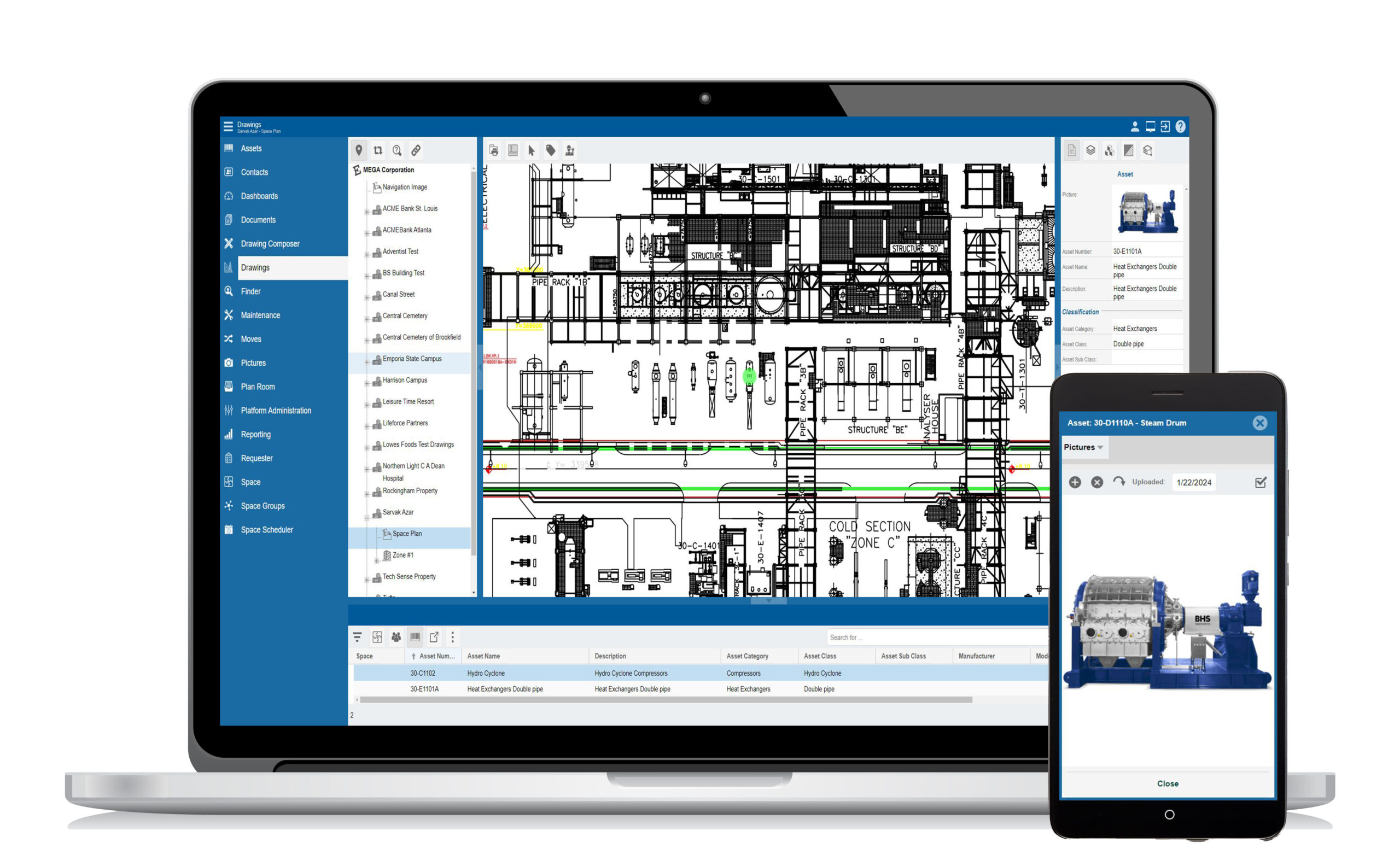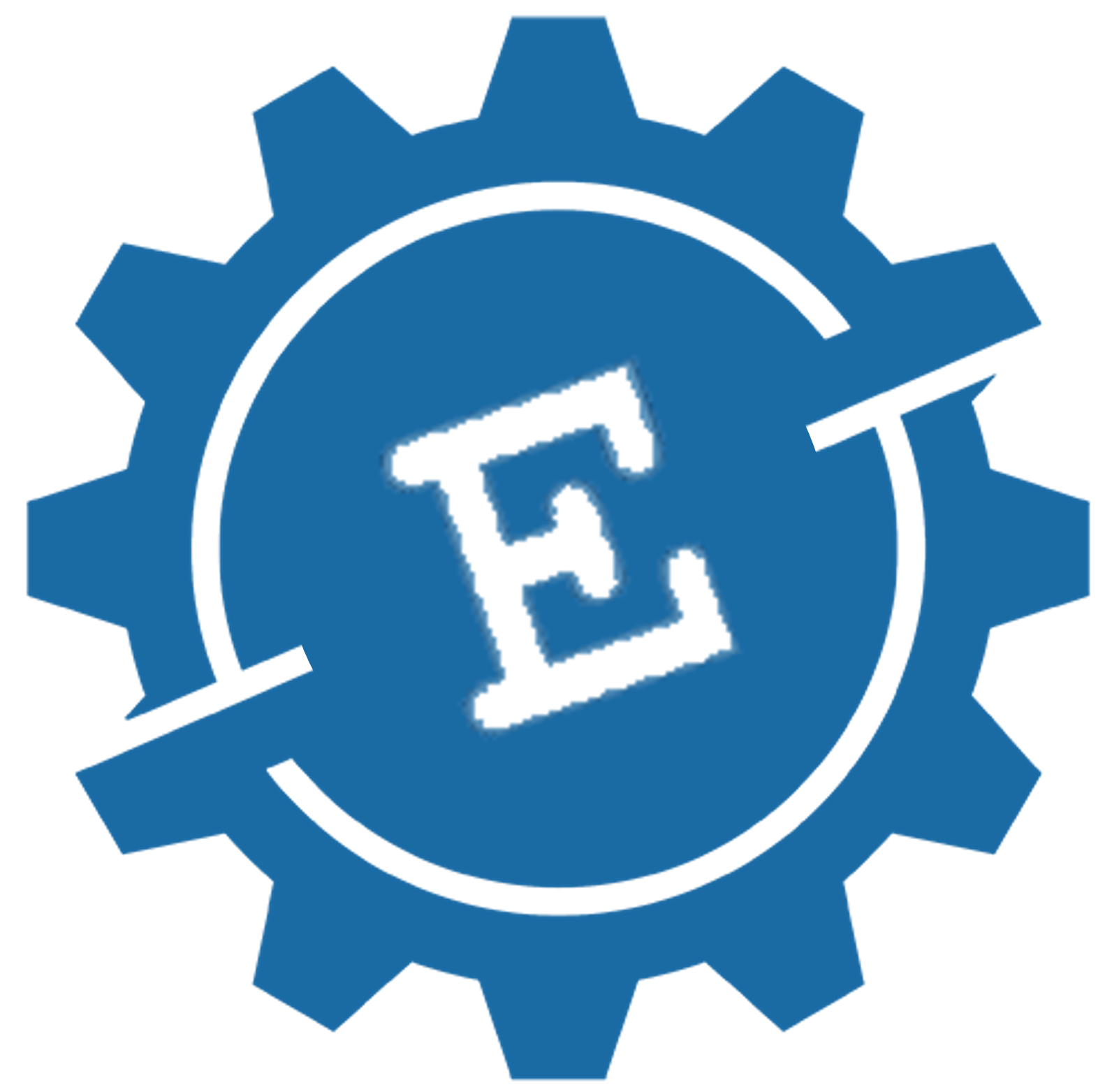
Table of Contents
Definition and purpose of a Computerized Maintenance Management System (CMMS)
Businesses benefits of CMMS software
What are some common CMMS use cases?
CMMS features and functionality
What to consider in a modern CMMS solution?
How to calculate the costs of your CMMS investment
EAM vs. CMMS vs. ERP: Understanding the differences
Which industries use CMMS software?
CMMS FAQs
Definition and purpose of a Computerized Maintenance Management System (CMMS)
A Computerized Maintenance Management System (CMMS) is a software solution that enables organizations to effectively oversee and coordinate maintenance activities, monitor asset management tasks, and boost equipment availability.
It acts as a centralized CMMS repository, maintaining vital information regarding maintenance planning, work orders, equipment specifications, and historical records.
The main aim of a CMMS is to improve maintenance effectiveness by optimizing maintenance processes such as predictive maintenance, scheduled preventive maintenance, and managing asset inventories.
By automating these tasks, maintenance teams can minimize downtime, prolong the lifespan of assets, and achieve greater cost savings.
Businesses benefits of CMMS software
CMMS software can streamline the documentation and scheduling of maintenance tasks, offer technicians convenient access to information such as maintenance records, manuals, and checklists, and make the management of work orders and requests for supervisors more straightforward.
Typically, these systems also incorporate chat or communication features that connect team members, along with reporting and dashboard functions for enhanced oversight of team activities.
Moreover, the majority of contemporary CMMS solutions are available as dedicated mobile applications that enable users to access features from anywhere with internet connectivity.
Implementing a CMMS can result in numerous positive transformations for a maintenance team’s operations, with some benefits being noticeable almost immediately. While the extent of impact will vary across different organizations, here is a top eight list of the most significant advantages.
Enhanced efficiency in maintenance scheduling and operations: Automated scheduling optimizes work orders, preventive maintenance, and resource distribution, alleviating the administrative burden. Maintenance activities are performed punctually, avoiding delays and inefficiencies.
Optimized work request and work order administration: A CMMS consolidates work request submissions, approvals, and assignments, ensuring tasks are effectively prioritized. This prevents bottlenecks, diminishes paperwork, and improves response times for technicians.
Precise and timely asset data: Maintenance records, asset details, and task notes are readily accessible, enabling maintenance teams to execute their duties with efficiency and make informed decisions based on real data pertaining to key performance indicators (KPIs).
Decreased maintenance expenses: Automating maintenance processes and reducing emergency repairs help businesses cut down on labor costs and unplanned expenditures. Additionally, a CMMS enhances inventory management, which diminishes waste and unnecessary purchases.
Enhanced communication among team members: A CMMS offers a unified platform for maintenance teams to monitor updates, assign tasks, and exchange vital information. With real-time alerts, teams remain informed, leading to a decrease in miscommunication and delays.
Boosted operational efficiency and equipment uptime: A CMMS facilitates the automation of advanced predictive and preventive maintenance strategies, enabling organizations to avert equipment failures.
Minimized costs associated with planned and unplanned downtimes: An asset maintenance program supported by a CMMS can significantly reduce breakdowns and unexpected downtimes, ensuring asset health and continuous productivity while extending the lifespan of physical equipment.
More effective safety and regulatory compliance: A CMMS automates inspections, monitors compliance records, and guarantees timely maintenance, mitigating legal risks and simplifying audits. Digital documentation aids in complying with OSHA, ISO, and industry-specific regulations while enhancing workplace safety.
What are some common CMMS use cases?
Compliance & regulatory audits
CMMS software records maintenance activities, schedules inspections, and produces compliance reports, assisting organizations in adhering to OSHA, FDA, ISO, and other regulatory requirements.
Increasing productivity
A CMMS streamlines maintenance workflows, efficiently assigns tasks, and delivers real-time asset information, decreasing manual effort and enhancing technician productivity. With mobile access and automated alerts, teams can complete assignments more swiftly and reduce delays.
Decreasing downtime
By facilitating predictive and preventive maintenance, a CMMS enables businesses to detect potential failures ahead of time. This minimizes unexpected downtime, keeps essential equipment functioning, and boosts overall efficiency.
Enterprise Asset Management (EAM)
A CMMS enhances Enterprise Asset Management (EAM) by monitoring the complete lifecycle of assets, from acquisition to disposal. It offers insights into asset performance, maintenance expenses, and depreciation, aiding businesses in optimizing asset utilization and maximizing return on investment.
Asset tracking & lifecycle management
Organizations monitor asset performance, repair history, and depreciation to prolong the lifespan of equipment and refine capital planning.
Manufacturing & production equipment maintenance
A CMMS helps avoid unplanned downtime in manufacturing facilities by organizing proactive maintenance and monitoring machine performance.
CMMS features and functionality
Maintenance management software is rapidly advancing and evolving in technology. While various solutions possess their unique features and strengths, they all include many of the same fundamental CMMS capabilities and functionalities, such as the following:
Management of spare parts inventory
CMMS software monitors the usage of spare parts, stock quantities, and reordering requirements to avoid shortages and minimize excess inventory costs. Automated notifications alert maintenance teams when supplies are low, ensuring that essential components are readily available for repairs.
Work order administration
A CMMS automates the processes of work order creation, assignment, and monitoring, ensuring that maintenance tasks are performed efficiently. Technicians receive comprehensive instructions, asset histories, and priority indicators, enhancing response times and improving workflow organization.
Dashboards and analytics
Customizable dashboards offer real-time insights into maintenance KPIs, asset performance, and work order statuses. Sophisticated reporting tools create audit-ready logs, compliance documents, and cost analyses, assisting businesses in making informed decisions based on data.
Scheduling of preventive maintenance
CMMS automates preventive maintenance activities based on time intervals, usage metrics, or condition-based triggers. This assists businesses in minimizing unanticipated failures, prolonging asset lifespan, and optimizing maintenance resources.
Mobile CMMS functionality
A mobile CMMS enables technicians to view work orders, update asset records, and scan barcodes or QR codes from any location. The offline capability ensures that maintenance teams can document information and synchronize updates once they regain connectivity.
Management of asset maintenance
CMMS consolidates asset tracking, maintenance records, warranty information, and service schedules, delivering a comprehensive overview of equipment health. Businesses utilize this information to optimize decisions about whether to repair or replace assets and enhance overall asset reliability.
What to consider in a modern CMMS solution?
Reputable CMMS provider
Outstanding customer service, high ratings and reviews, practical examples and case studies, evidence of regulatory compliance, certifications, and audits.
CMMS implementation support
For organizations transitioning to a CMMS, the implementation phase can significantly influence its success. The typical CMMS implementation process consists of the following stages:
Stage 1 – Preparation and planning: Strategize the implementation to guarantee ample time and resources for system setup and proper training of your team.
Stage 2 – Data gathering: Compile information that will be uploaded into the system to guide your maintenance strategy, including maintenance histories and manuals.
Stage 3 – Workflow creation and implementation: Design the system around your workflows and integrate them into your team’s daily activities.
Stage 4 – Post-implementation and ongoing improvement: Establish procedures for continuous assessment and enhancement of maintenance effectiveness with the assistance of maintenance reports and dashboards.
Customization
The ability to customize a CMMS is vital since every maintenance team functions differently—regardless of industry-specific workflows, distinct asset types, or regulatory demands. A generic, one-size-fits-all solution forces teams to adapt to inflexible processes, resulting in inefficiencies and frustration. If they cannot modify the system to suit their requirements, technicians may resist using the tool, diminishing its effectiveness and overall impact.
CMMS data security
Data security is essential for a CMMS as it holds sensitive details about assets, maintenance schedules, inventory, and operational workflows. Inadequate security may lead to data breaches, unauthorized access, or even system downtime, jeopardizing vital maintenance operations. A breach could reveal confidential company information, disrupt production, and result in expensive compliance infractions. Organizations without robust security measures risk financial losses, damage to their reputation, and decreased trust among stakeholders. A secure CMMS allows maintenance teams to function with assurance, knowing their data is safeguarded.
CMMS integrations
The capability to integrate is crucial for a CMMS, particularly with IoT devices and ERP systems, as it facilitates smooth data exchange and real-time insights. IoT sensors enable condition-based monitoring, helping maintenance teams transition from reactive to predictive maintenance, which reduces downtime and prolongs asset lifespan. Integration with ERP systems ensures that maintenance operations align with larger business functions like procurement and finance. Without these integrations, maintenance teams must rely on manual data entry, which heightens errors, prolongs response times, and limits insight into asset health and costs. A disconnected system results in inefficiencies, unexpected failures, and increased operational costs.
Cloud-based CMMS vs. On-premise
Choosing between cloud-based and on-premise software may seem complicated, but it can become straightforward once you assess your needs and capabilities.
Contemporary CMMS software usually operates as cloud-based solutions. Being cloud-based means that all data stored in the system is contained in and accessed from a single, centralized database and can be reached on any device with a simple username and password.
Conversely, on-premise solutions must be installed on individual devices, with data stored on the company’s servers. Thus, your internal IT team must handle system upgrades.
Pricing model
When assessing the pricing of CMMS, organizations should look beyond the initial cost and evaluate the overall value the system delivers. Important factors include scalability, user count, included features, and any hidden costs related to implementation, training, or integrations. An economically viable CMMS should provide flexible pricing that aligns with your team’s size and needs while ensuring a robust ROI through improved efficiency, reduced downtime, and optimized maintenance expenses. Be cautious of solutions that appear cheap but lack essential functions, as they can lead to higher costs in the long term due to inefficiencies and workarounds.
How to calculate the costs of your CMMS investment
EAM vs. CMMS vs. ERP: Understanding the differences
Organizations utilize various software solutions to oversee assets, maintenance, and business operations.
Three primary systems—Computerized Maintenance Management System (CMMS), Enterprise Asset Management (EAM), and Enterprise Resource Planning (ERP)—have unique yet occasionally overlapping functions.
1. CMMS (Computerized Maintenance Management System)
Focus: Management of maintenance
Purpose: Assists organizations in planning, monitoring, and enhancing maintenance activities to boost asset performance and equipment availability.
Key Features:
– Management of work orders
– Scheduling for preventive and predictive maintenance
– Tracking of assets and maintenance history
– Management of spare parts inventory
– Reporting and real-time data
Best for: Maintenance teams seeking to streamline their maintenance operations.
2. EAM (Enterprise Asset Management)
Focus: Management of asset lifecycles
Purpose: Offers a comprehensive method for managing physical assets throughout their entire life, from acquisition to disposal.
Key Features:
– All the functionalities of CMMS plus:
– Management of asset lifecycles (purchase, usage, upgrades, retirement)
– Compliance with regulations and maintenance evaluations
– Advanced analytics and predictive maintenance
– Integration with IoT and real-time monitoring
Best for: Large organizations managing various assets across multiple locations, plants, or industries.
3. ERP (Enterprise Resource Planning)
Focus: Resource management across the organization
Purpose: Unifies finance, human resources, supply chain, procurement, and operations into a single system for enhanced business efficiency.
Key Features:
– Management of financial activities and accounting
– Supply chain management and procurement
– Basic maintenance tracking (if combined with EAM or CMMS)
Best for: Organizations seeking a comprehensive management platform for finance, HR, and operations.
Which One is Right for You?
Select CMMS if — your primary aim is to enhance maintenance effectiveness and decrease downtime.
Select EAM if — you require a thorough asset management system with long-term lifecycle oversight.
Select ERP if — you need a complete solution for managing financial, HR, and operational functions.
Which industries use CMMS software?
Every organization that possesses equipment or physical structures can gain from using a CMMS. For some businesses, the condition of specific assets is vital for operational continuity. The primary users of CMMS can be categorized into four distinct groups.
CMMS for manufacturing
Maintenance in the manufacturing sector is essential for ensuring the efficiency of equipment, reducing downtime, and upholding production quality. This involves servicing production machinery, conveyor systems, robotic equipment, HVAC systems, and other critical assets. Manufacturers implement CMMS software to automate maintenance schedules, monitor work orders, handle spare parts, and maintain compliance with industry standards.
Sectors such as automotive, pharmaceuticals, food processing, and electronics depend on CMMS to enhance production processes and boost asset reliability.
CMMS for heavy industries
Heavy industries encompass those that depend on sizable machinery or equipment to operate. This includes mining, construction, energy, and airlines, all of which need meticulous and strategic preventive maintenance planning to keep their equipment operational and comply with stringent regulations.
These sectors allocate significant resources to advanced maintenance strategies aimed at maximizing productivity from their assets, as increased productivity correlates directly with higher revenue. They utilize CMMS features to continuously assess and refine their maintenance practices, optimizing machine efficiency and asset performance, making it a valuable investment.
CMMS for facilities management
Maintenance of facilities is a key aspect of facility management, ensuring that all building systems function effectively and are comfortable for occupants. This involves managing the building’s infrastructure, electrical, plumbing, lighting systems, HVAC, and other equipment.
Different types of facilities, including hotels, casinos, churches, fitness centers, commercial properties, museums, aqua parks, and others, utilize CMMS software.
CMMS for fleet management
Maintenance of fleets plays a vital role in fleet management, ensuring that vehicles and equipment are kept in excellent condition to support daily operations. This encompasses servicing trucks, buses, vans, heavy machinery, and specialized transport vehicles to avoid breakdowns and prolong asset longevity.
Industries such as logistics, construction, public transportation, emergency services, and rental fleets employ CMMS software to automate maintenance schedules, monitor asset health, manage work orders, and uphold regulatory compliance.
CMMS for field maintenance
Field maintenance entails servicing dispersed assets that operate independently. Some notable examples include:
Cell Towers & Antennas – Inspecting and repairing antennas, base transceiver stations (BTS), and structural elements.
Electrical Grid & Substations – Inspecting and repairing power lines, substations, circuit breakers, and switchgear.
Water & Wastewater Utilities – Maintaining pumps, pipelines, treatment plants, and metering systems.
Power Plants & Generation Facilities – Overseeing the maintenance of turbines, generators, transformers, boilers, and control systems.
Given that these assets are often located in remote areas, exposed to challenging conditions, and essential for public infrastructure, field maintenance teams depend on CMMS and mobile technology to track work orders, schedule inspections, and ensure adherence to safety and environmental regulations.

